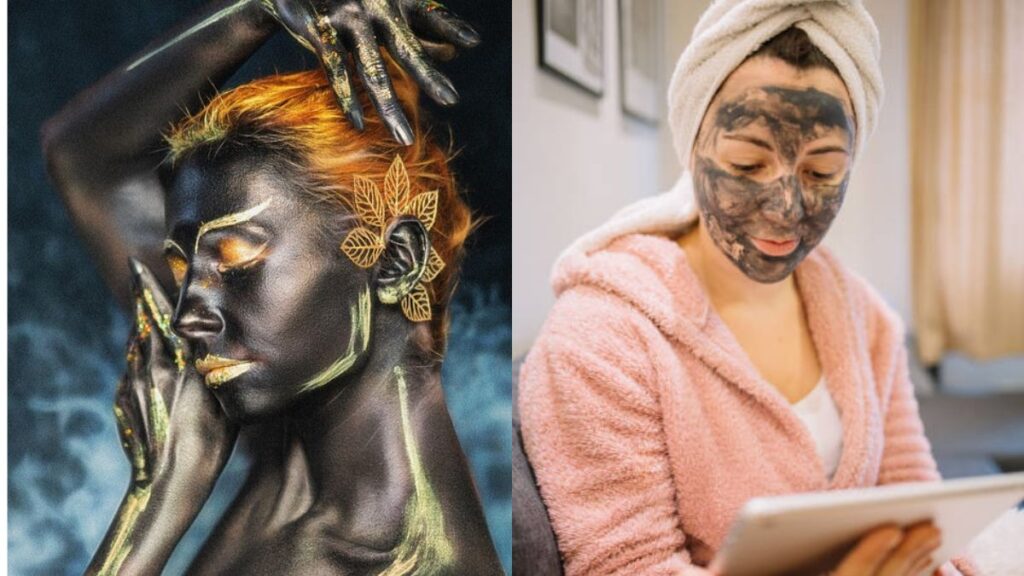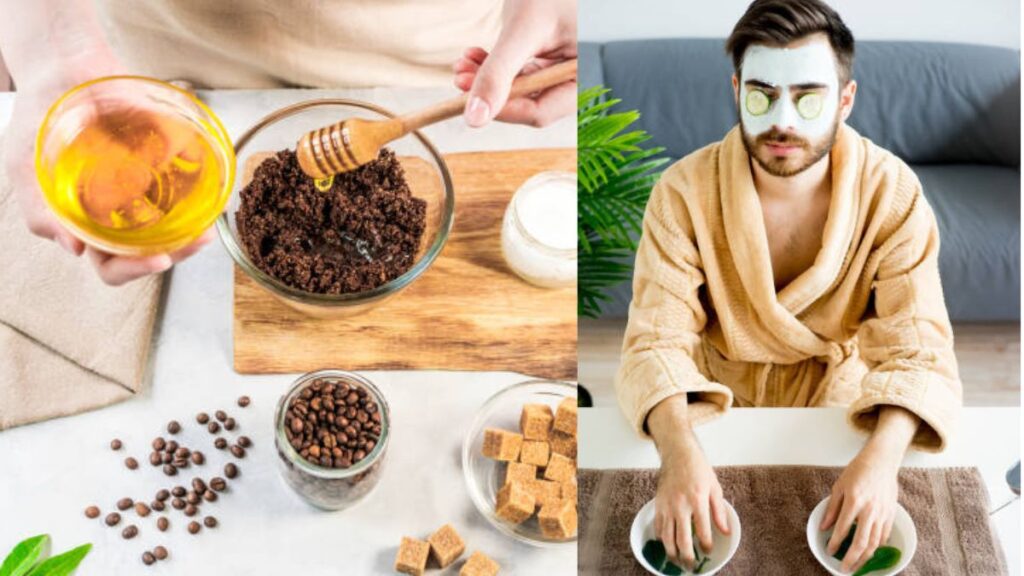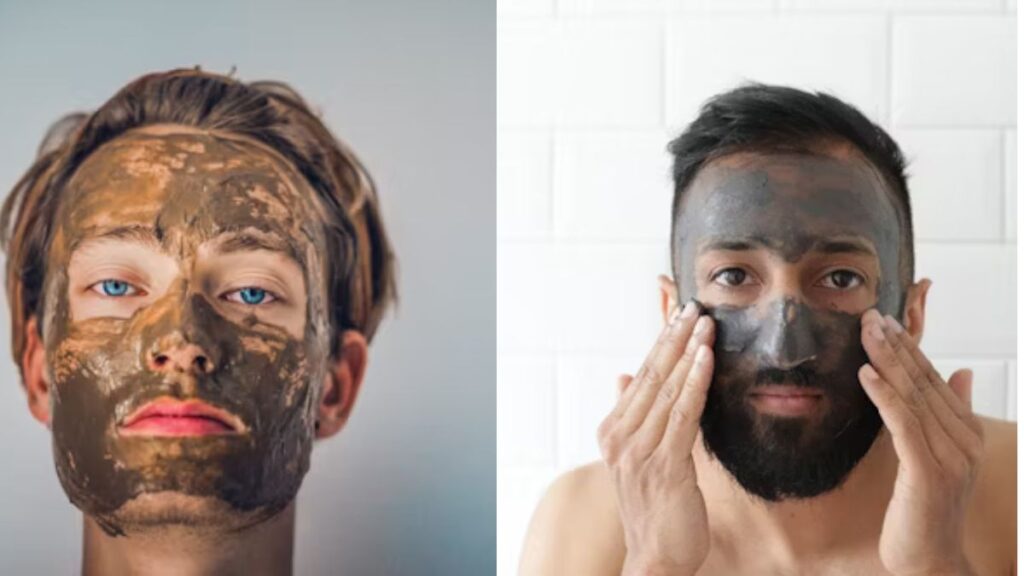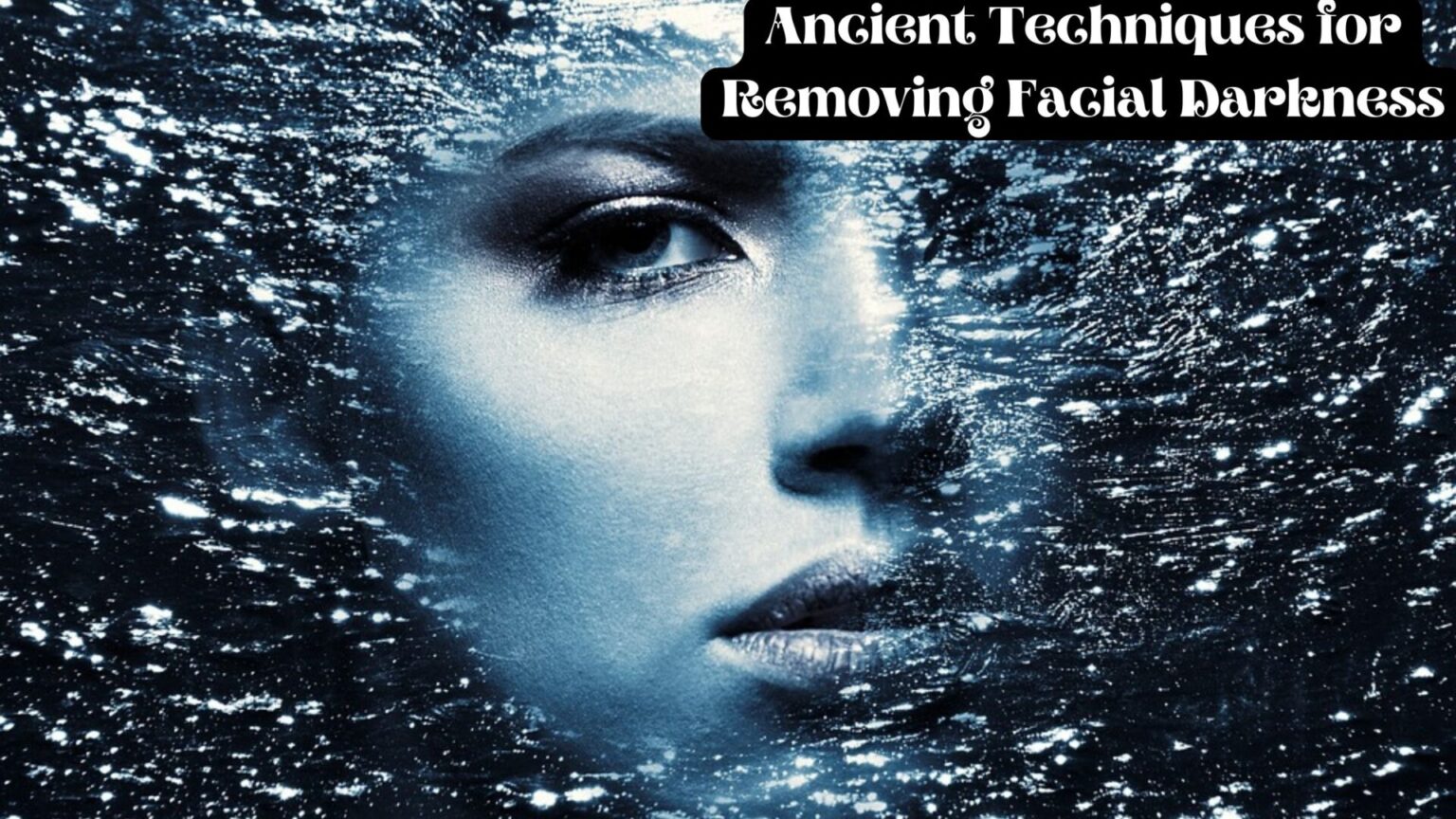Introduction:
Unlocking Timeless Beauty: Ancient Techniques for Removing Facial Darkness
In the timeless pursuit of beauty, we often find ourselves drawn to the wisdom of ancient civilizations, seeking age-old remedies that have withstood the test of time. Among the myriad of beauty concerns, facial darkness ranks high on the list for many individuals, casting a shadow over one’s confidence and self-esteem. However, buried within the annals of history lie remarkable techniques and remedies that offer a beacon of hope in our quest to restore luminosity to the face.
What are some specific ancient civilizations known for their beauty rituals and techniques to combat facial darkness?
Ancient Techniques for Removing Facial Darkness:-

Several ancient civilizations are renowned for their beauty rituals and techniques aimed at combating facial darkness. Here are some notable examples:
- Ancient Egypt: Egyptian civilization is perhaps one of the most well-known for its beauty rituals. Egyptians believed in the importance of skincare and used various natural ingredients to maintain a youthful and radiant complexion. They utilized substances like milk, honey, olive oil, and essential oils in their beauty routines to moisturize the skin, lighten dark spots, and reduce signs of aging.
- Ancient India: In ancient India, the practice of Ayurveda played a significant role in skincare. Ayurvedic texts contain numerous remedies and treatments for various skin issues, including facial darkness. Ingredients such as turmeric, sandalwood, neem, and rose water were commonly used to brighten the skin, reduce pigmentation, and promote an even tone.
- Ancient China: Traditional Chinese medicine (TCM) also emphasized skincare as part of overall health and wellness. Chinese herbal medicine and acupuncture were used to treat various skin conditions, including facial darkness. Ingredients like ginseng, licorice root, pearl powder, and green tea were incorporated into skincare formulations to lighten dark spots and improve skin texture.
- Ancient Greece: Greek civilization valued beauty and aesthetics, evident in their skincare practices. They believed in the power of natural ingredients such as olive oil, honey, yogurt, and herbs like mint and thyme to cleanse, nourish, and rejuvenate the skin. Greek women often used these ingredients in masks and treatments to maintain a glowing complexion and combat facial darkness.
- Ancient Persia (Iran): Persian beauty rituals also revolved around natural ingredients and holistic approaches to skincare. Ingredients like rose water, saffron, almond oil, and pomegranate were commonly used in Persian skincare to hydrate the skin, reduce inflammation, and brighten dark spots.
How does Ayurveda, the ancient Indian system of medicine, approach the issue of facial darkness, and what are some key remedies suggested?
Ayurveda, the ancient Indian system of medicine, approaches the issue of facial darkness holistically, considering both internal imbalances and external factors that contribute to the condition. According to Ayurveda, facial darkness or pigmentation issues are often manifestations of underlying imbalances in the body’s doshas, or energies, particularly Pitta and Kapha doshas. Therefore, Ayurvedic remedies aim to restore balance to these doshas while also addressing external factors such as skincare habits and environmental influences.
Here are some key principles and remedies suggested by Ayurveda to address facial darkness:

- Dietary Modifications: Ayurveda emphasizes the importance of maintaining a balanced diet to promote overall health and well-being, including healthy skin. Foods that aggravate Pitta and Kapha doshas, such as spicy, oily, and processed foods, are generally avoided. Instead, Ayurvedic recommendations often include a diet rich in fresh fruits, vegetables, whole grains, and lean proteins to support skin health and vitality.
- Herbal Supplements: Ayurvedic practitioners may prescribe herbal supplements or formulations to address internal imbalances and support skin health. Herbs like neem, turmeric, manjistha, and aloe vera are known for their detoxifying, anti-inflammatory, and skin-brightening properties. These herbs may be taken internally or applied topically as part of skincare routines.
- Abhyanga (Self-Massage): Abhyanga, or self-massage with herbal oils, is a cornerstone of Ayurvedic skincare rituals. Massaging the face and body with warm herbal oils not only nourishes the skin but also promotes relaxation and detoxification. Certain oils, such as coconut oil, almond oil, or sesame oil infused with skin-beneficial herbs, may be particularly beneficial for addressing facial darkness.
- Ubtan (Herbal Paste): Ubtan is a traditional Ayurvedic herbal paste used for cleansing and exfoliating the skin. It typically consists of a combination of powdered herbs, grains, and pulses mixed with water, milk, or rose water to form a paste. Ubtan is applied to the face and body to remove impurities, improve skin texture, and lighten dark spots over time.
- Ayurvedic Face Masks: Face masks made from natural ingredients are another popular Ayurvedic remedy for facial darkness. Ingredients like turmeric, sandalwood, chickpea flour, and rose water are commonly used in Ayurvedic face masks to brighten the skin, reduce pigmentation, and impart a healthy glow.
- Lifestyle Modifications: Ayurveda emphasizes the importance of lifestyle factors such as adequate sleep, stress management, and regular exercise in maintaining overall health and balanced doshas. Practicing relaxation techniques like yoga, meditation, and pranayama (breathwork) can help reduce stress levels and promote skin health.
Can you provide examples of specific herbs, spices, or natural ingredients used in ancient times to lighten and brighten the skin?
Certainly! Ancient civilizations have long relied on a variety of herbs, spices, and natural ingredients to lighten and brighten the skin. Here are some examples:
- Turmeric: Turmeric is perhaps one of the most widely used natural ingredients for skin brightening. It contains curcumin, a compound known for its anti-inflammatory and antioxidant properties. In many cultures, turmeric has been used for centuries to lighten dark spots, even out skin tone, and impart a natural glow.
- Sandalwood: Sandalwood is prized for its soothing and cooling properties, making it a popular ingredient in skincare formulations. It helps to calm irritated skin, reduce inflammation, and promote an even complexion. Sandalwood paste or oil is often applied topically to lighten dark spots and blemishes.
- Lemon: Lemon juice is rich in vitamin C, a potent antioxidant that helps to brighten the skin and reduce hyperpigmentation. It has natural bleaching properties that can lighten dark spots and scars over time. However, lemon juice can be acidic and may irritate some individuals, so it’s essential to dilute it with water before applying it to the skin.
- Aloe Vera: Aloe vera is renowned for its soothing and healing properties, making it a popular remedy for various skin concerns, including pigmentation issues. It contains compounds that can inhibit the production of melanin, the pigment responsible for dark spots. Aloe vera gel can be applied directly to the skin to lighten dark areas and promote a more even skin tone.
- Licorice Root: Licorice root extract is known for its skin-brightening properties and ability to reduce hyperpigmentation. It contains glabridin, a compound that inhibits the production of melanin and helps to fade dark spots. Licorice root extract is commonly found in skincare products designed to lighten the skin and even out discoloration.
- Papaya: Papaya contains an enzyme called papain, which acts as a natural exfoliant and helps to remove dead skin cells, revealing brighter, more radiant skin underneath. It also contains vitamin C, which helps to lighten dark spots and promote an even complexion. Papaya pulp or juice can be applied topically as a mask or used in skincare formulations.
- Rose Water: Rose water is a natural astringent and toner that helps to tighten pores, reduce redness, and improve overall skin texture. It has mild bleaching properties that can lighten dark spots and blemishes over time. Rose water can be used as a facial mist, toner, or ingredient in homemade face masks.
How do ancient techniques for removing facial darkness compare to modern skincare methods and treatments?
Ancient techniques for removing facial darkness often relied on natural ingredients, holistic approaches, and traditional practices, while modern skincare methods and treatments incorporate scientific advancements, technology, and a wide array of synthetic compounds. Here’s a comparison between the two approaches:

- Ingredients:
- Ancient techniques predominantly utilized natural ingredients such as herbs, spices, botanical extracts, and oils to address facial darkness. These ingredients were often derived from plants, fruits, and other organic sources.
- Modern skincare methods incorporate a combination of natural and synthetic ingredients, including vitamins, peptides, retinoids, and chemical compounds. Many modern formulations are designed to target specific skin concerns with precision and efficacy.
- Approach:
- Ancient techniques often took a holistic approach to skincare, focusing on balancing the body’s internal energies, promoting overall health and well-being, and addressing root causes of skin issues.
- Modern skincare methods tend to be more targeted and specialized, focusing on specific skin concerns such as hyperpigmentation, aging, acne, or sensitivity. These methods often involve a combination of topical treatments, medical procedures, and lifestyle modifications.
- Technology:
- Ancient techniques relied on manual methods such as massage, exfoliation, and herbal remedies, without the aid of modern technology.
- Modern skincare methods leverage advanced technologies such as lasers, ultrasound, radiofrequency, and light therapy to deliver targeted treatments with greater precision and efficiency. These technologies can penetrate deeper layers of the skin and produce more dramatic results.
- Availability:
- Ancient skincare techniques were often accessible to people through natural resources and traditional knowledge passed down through generations. However, access to certain ingredients or practices may have been limited based on geographical location and cultural traditions.
- Modern skincare products and treatments are widely available in the market, ranging from over-the-counter creams and serums to prescription medications and professional procedures offered by dermatologists and estheticians. Advances in manufacturing, distribution, and marketing have made modern skincare more accessible to a global audience.
- Safety and Efficacy:
- Ancient skincare techniques were developed over centuries of observation and experimentation and were generally considered safe when used as directed. However, some natural ingredients may cause adverse reactions in certain individuals, and efficacy may vary depending on factors such as skin type and condition.
- Modern skincare methods undergo rigorous testing and clinical trials to ensure safety, efficacy, and consistency of results. While some synthetic ingredients may carry potential risks or side effects, they are often formulated with precise concentrations and delivery systems to minimize adverse reactions.
Conclusion
As we journey through the annals of time, we uncover a wealth of ancient techniques and remedies that offer invaluable insights into the art of skincare. While modern advancements continue to revolutionize the beauty industry, there is a profound appreciation for the timeless wisdom passed down through generations. By embracing these ancient techniques for removing facial darkness, we not only honor the traditions of our ancestors but also unlock the secrets to timeless beauty that transcend the ages.
FAQs:
Q: What are Ancient Techniques for Removing Facial Darkness?
A: Ancient techniques for removing facial darkness encompass a variety of traditional methods from different cultures aimed at lightening or brightening the complexion. These techniques often utilize natural ingredients and holistic approaches to promote healthier skin.
Q: Do Ancient Techniques for Removing Facial Darkness actually work?
A: While some ancient techniques may have anecdotal evidence supporting their effectiveness, scientific studies validating their efficacy are limited. Results may vary depending on individual skin types and conditions.
Q: Are Ancient Techniques for Removing Facial Darkness safe?
A: Many ancient techniques involve natural ingredients, but it’s essential to be cautious and do a patch test before applying any new substance to the skin. Consultation with a dermatologist or skincare professional is advisable, especially for those with sensitive skin or pre-existing skin conditions.
References:
- Rathi, Sanjay K. “Acne vulgaris treatment: the current scenario.” Indian journal of dermatology vol. 55, Suppl 2 (2010): 148-54. doi:10.4103/0019-5154.70660
- Sarkar, Rashmi et al. “Cosmeceuticals for Hyperpigmentation: What is Available?” Journal of cutaneous and aesthetic surgery vol. 4,4 (2011): 210-5. doi:10.4103/0974-2077.91253
- Draelos, Zoe Diana. “Skin lightening preparations and the hydroquinone controversy.” Dermatologic therapy vol. 20,5 (2007): 308-13. doi:10.1111/j.1529-8019.2007.00143.x






